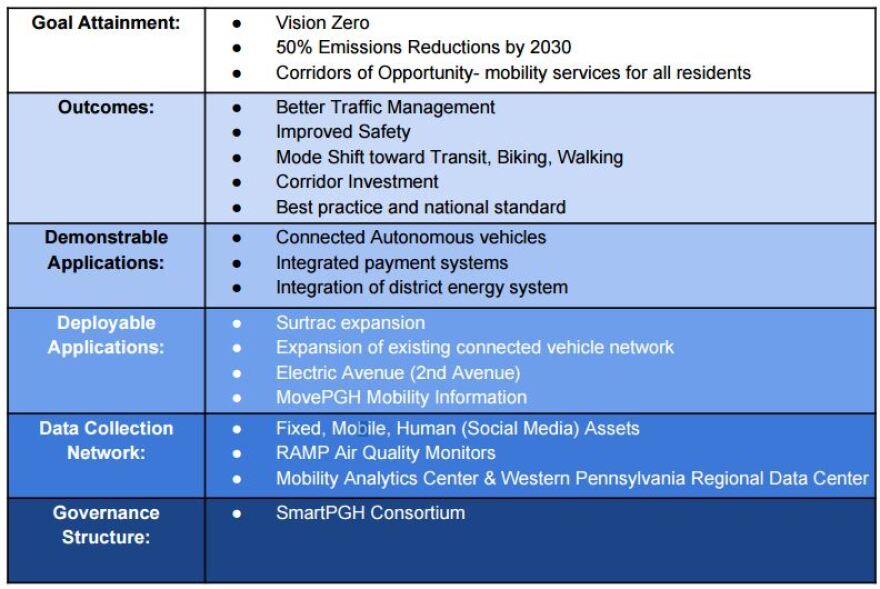Pittsburgh Mayor Bill Peduto wants electric avenues, responsive stoplights, a drop in city emissions totals and more self-driving cars, and he doesn't want to wait for a $50 million grant to get them.
The Steel City is one of seven finalists for a multi-million “Smart City” prize offered through the U.S. Department of Transportation to improve urban transit.
At an event Tuesday, Peduto said city officials need to treat the ensuing notoriety as an opportunity to consider innovative but realistic changes to city infrastructure regardless of the contest's outcome.
“Somebody will say, ‘Yeah, you should just build a subway to Oakland,’” Peduto said. “That would cost about $3 to $3.5 billion, so you’re not going to be able to do that with $50 million. They’ll say, ‘Well, you should just take out the signals and make it easier for people to drive into town. Build some more parking garages.’ We would not only not be a finalist – we’d be laughed at.”
Pittsburgh’s current proposal suggests converting Second Avenue into an “electric avenue” that would charge electric cars as they drive between Downtown and Hazelwood. Two electric generation stations would power the city’s T trains, and Pittsburgh stoplights would respond to traffic needs in real time.

City buy-in began with Carnegie Mellon University's Scalable Urban Traffic Control program, which uses sensors to more efficiently respond to traffic in real time by altering roadside signals. Surtrac is already in use in the East End, but Peduto said the Smart City plan would broaden its reach.
Peduto said he also wants new ideas to tackle problems stemming from former Mayor David L. Lawrence’s 1950s transportation plan.
“We built roads for the automobile and parking garages for the automobile, and we built tunnels and bridges," he said. "We saw a city hollow out, and we saw what was left decline and sprawl all around.”
The proposal also includes a 50 percent reduction rate in emissions by 2030, the use of self-driving cars and an increased emphasis on alternative modes of transportation, such as transit, walking and biking.





